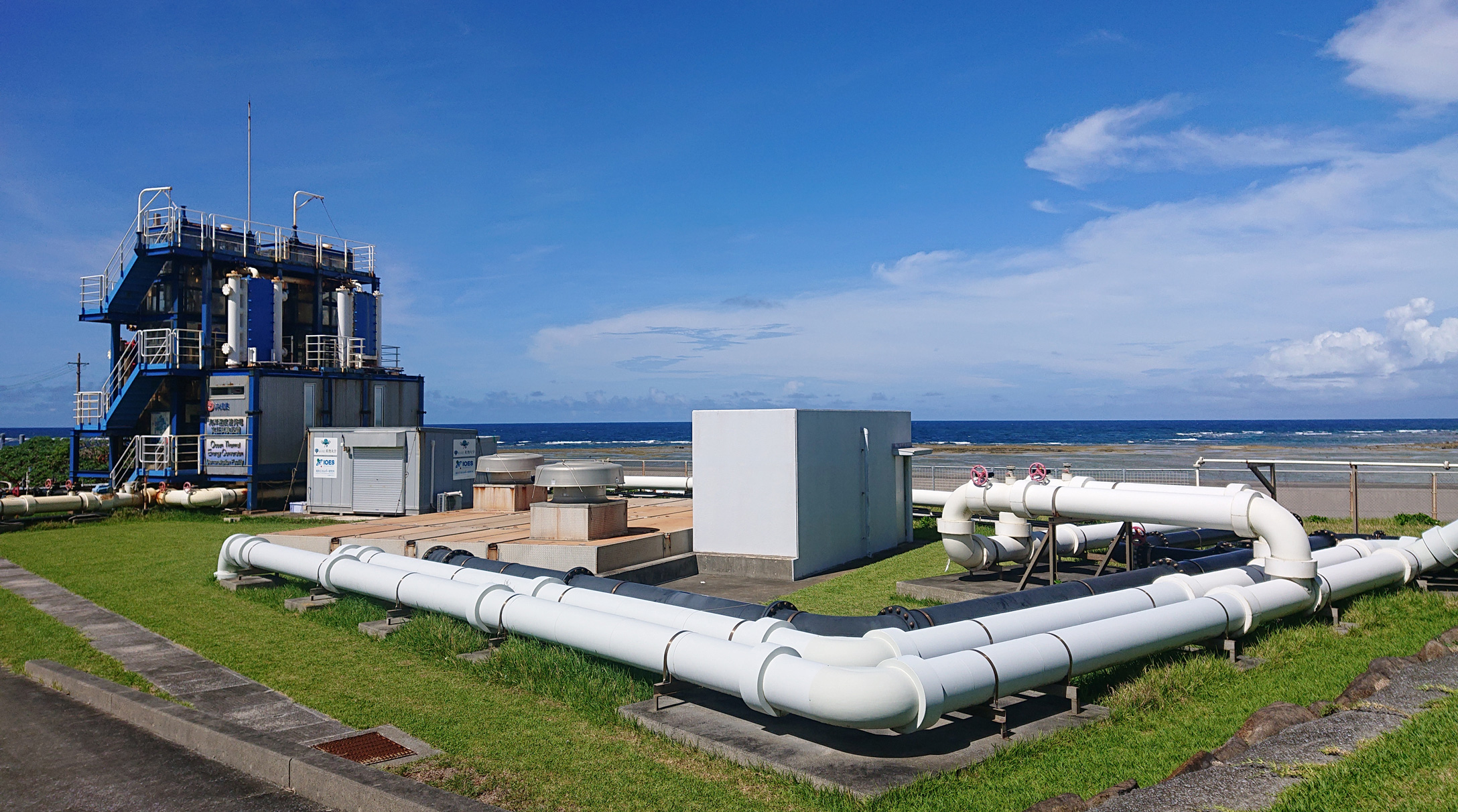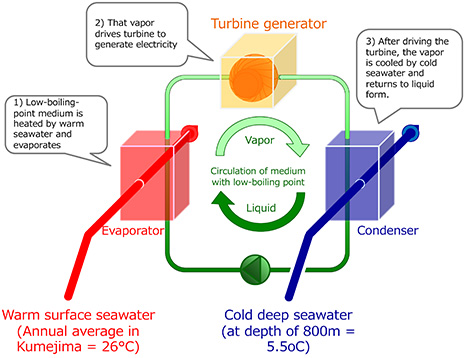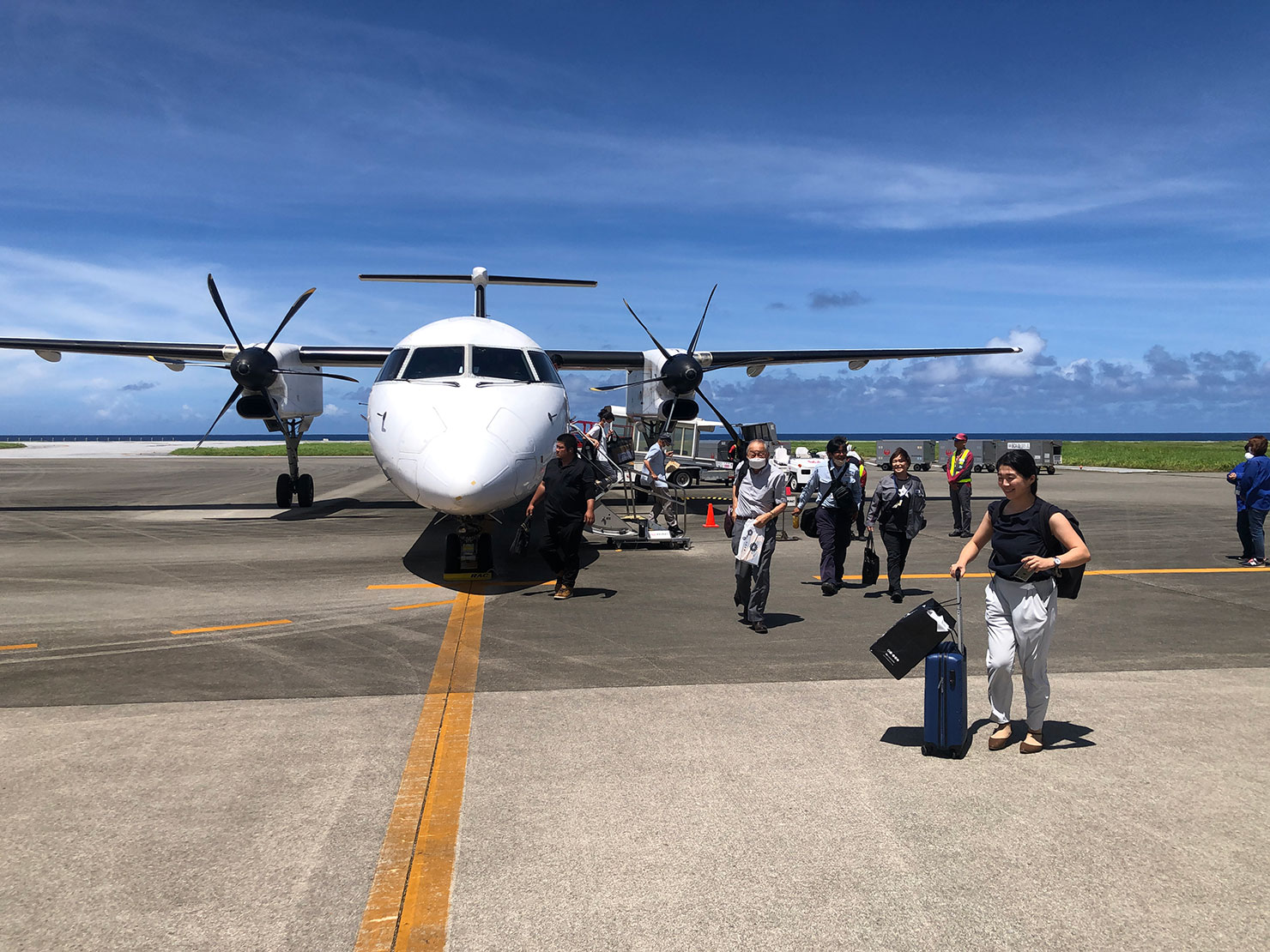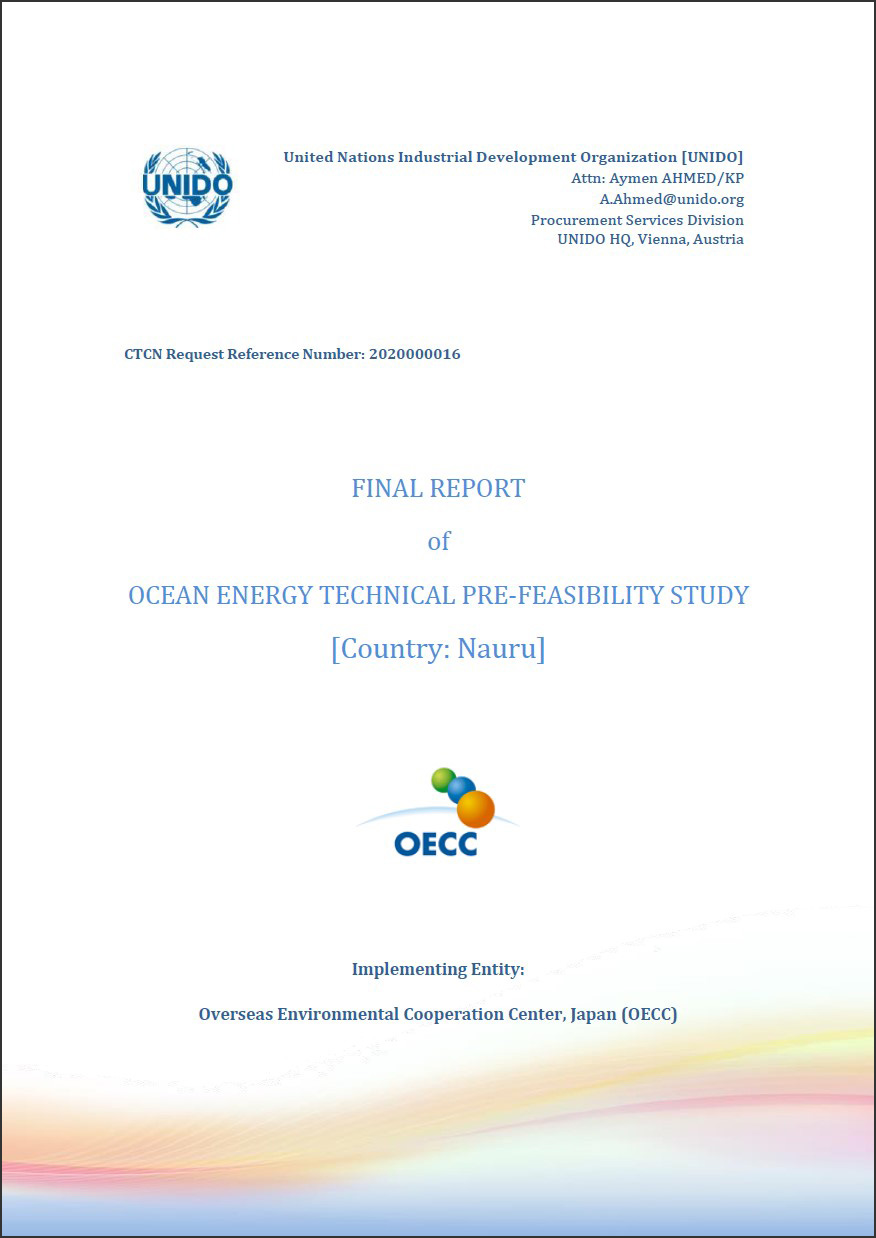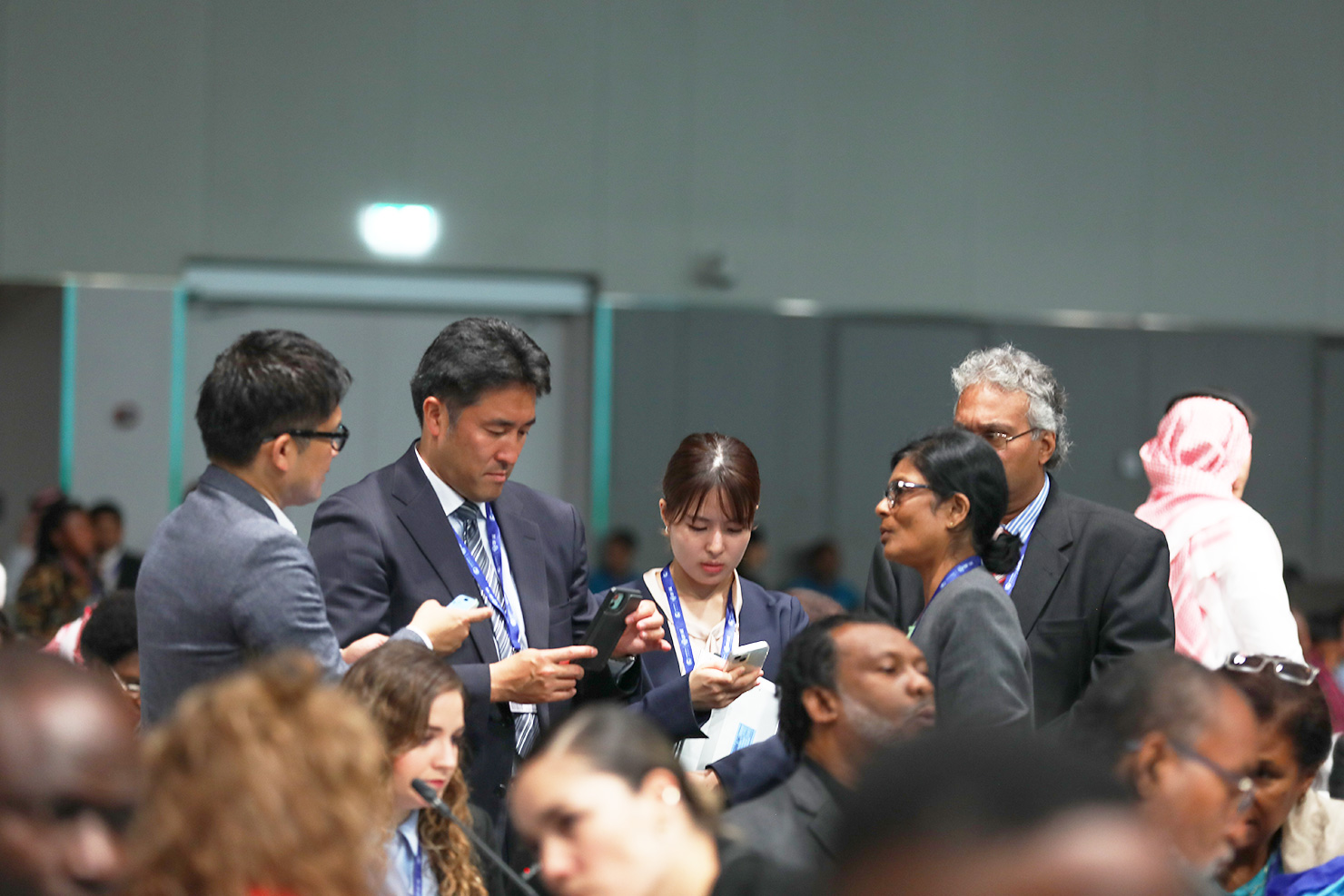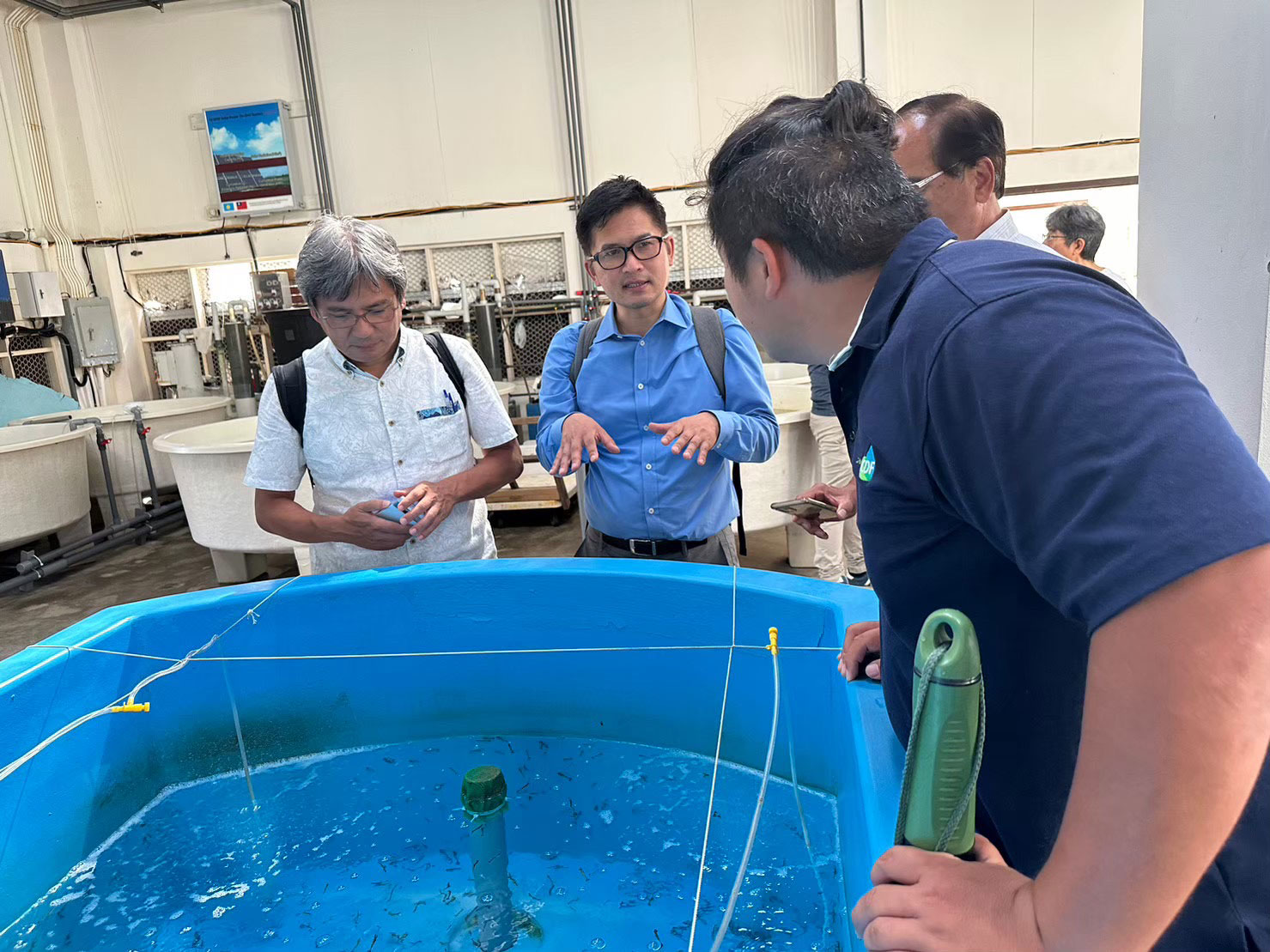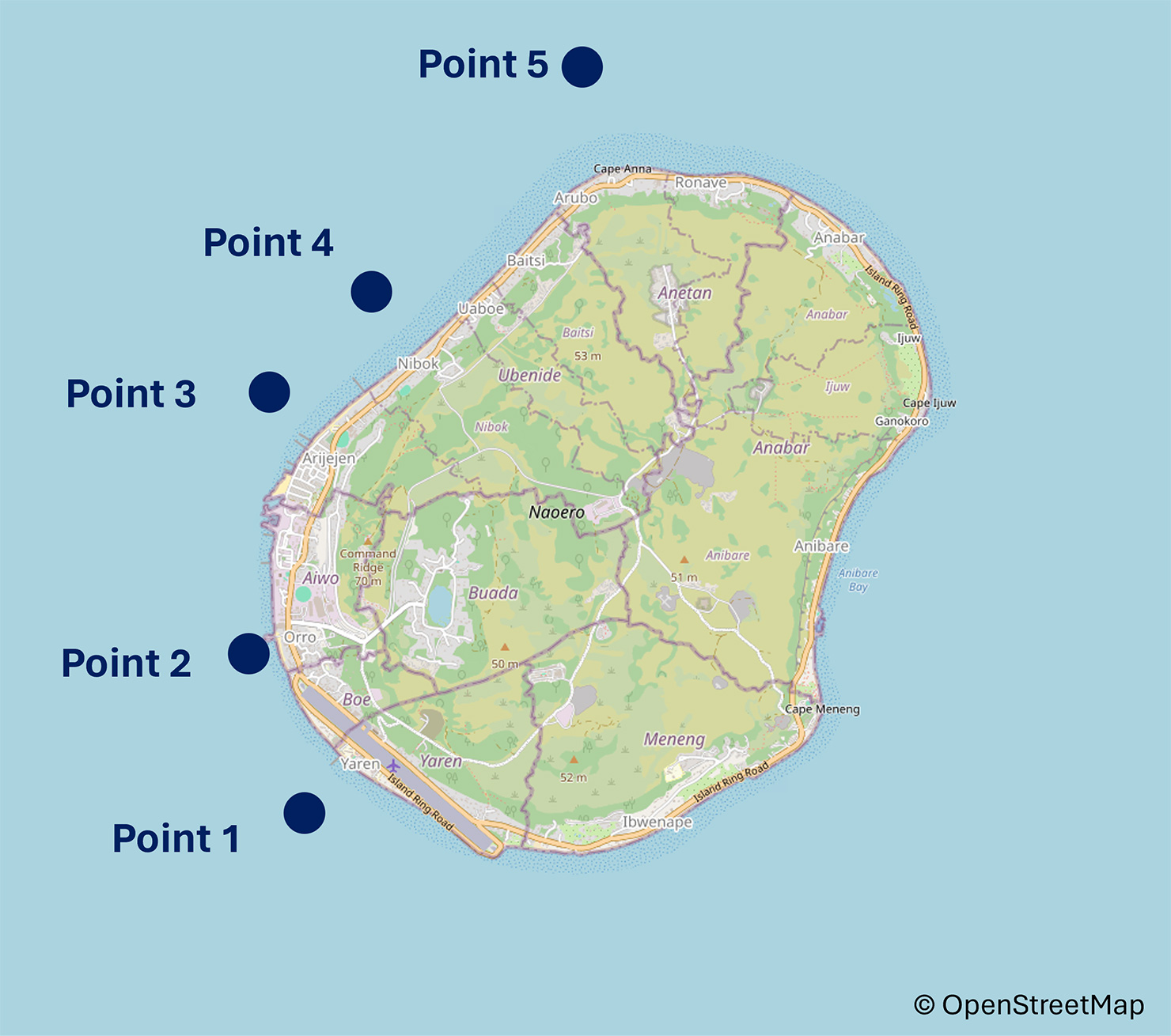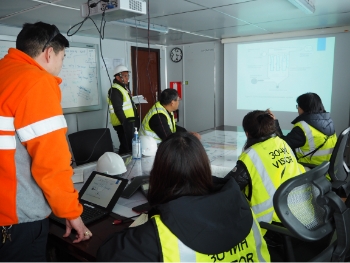About Ocean Thermal Energy Conversion(OTEC)
The oceans surrounding us have a large temperature difference between the surface and the deeper layers. The power generation system that utilizes this ocean temperature difference is called Ocean Thermal Energy Conversion (OTEC). Its heating source is warm seawater at 25 to 30°C on the surface layer of the ocean, and its cooling source is cold seawater at 5 to 7°C in the deeper layers, 800 to 1,000 meters below the surface. Since 2013, a demonstration facility has been in operation in Kumejima Town, Okinawa. While OTEC supplies sustainable energy without emitting GHGs, it also provides opportunities to foster local industries, as in the “Kumejima Model” where aquaculture fisheries, cool-temperature agriculture, and food products and cosmetics are being developed through the secondary use of deep seawater in collaboration with the local government.


